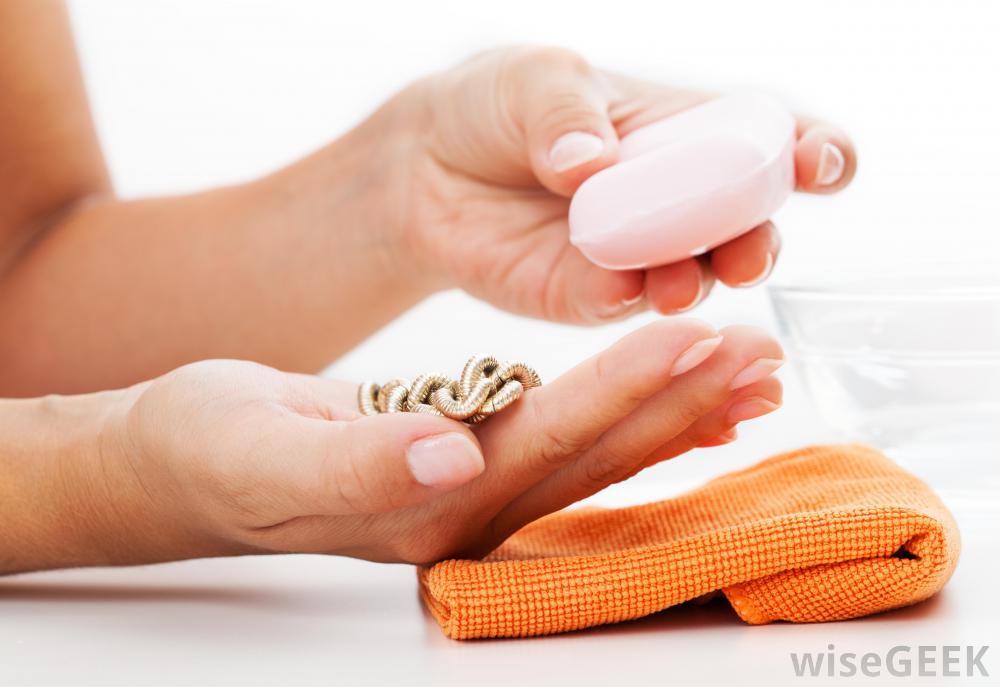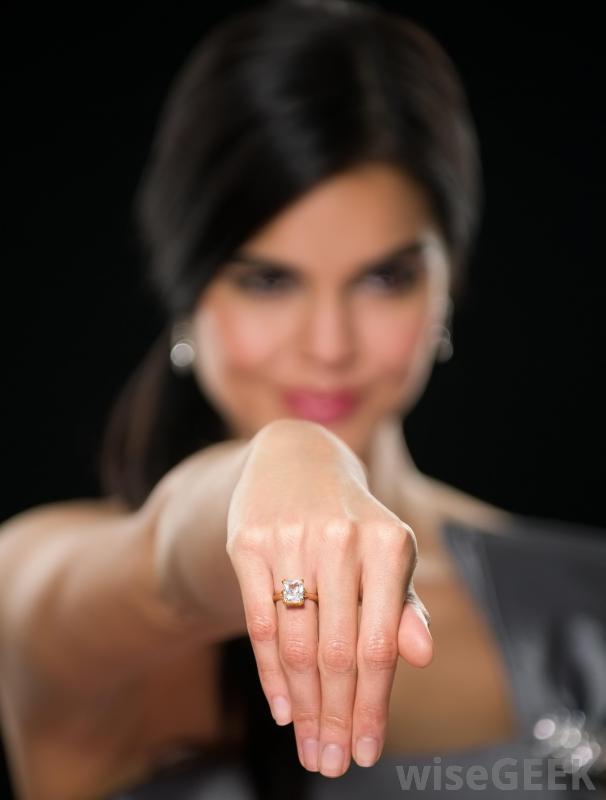

Getting your tools together is a good place to start. Some items that may be helpful include mild dish soap, a clean toothbrush, a soft dry cloth, and a lint-free cloth like microfiber. Some experts also recommend a non-abrasive jewelry cleaner, but a lot of this depends on what exactly you’re working with. This sort of product can be purchased from many jewelers as well as some drug stores.
In almost all cases you’ll want to start just by washing, drying, and buffing your piece with clear water and clean cloths or brushes, so having these tools readily available will make things easier. The gentler the touch the better so as to protect the surface from scratches or other pressure marks.
It is important not to subject jewelry to unnecessary chemicals or abrasive substances, particularly not before you’ve tried less intensive options. Some home remedy experts recommend using toothpaste or certain baking soda solutions for cleaning jewelry, particularly metal, but this isn’t usually something that professionals say is a good idea. The chemicals in these and other at-home products can cause surface-level damage like fine scratches. These aren’t always visible, at least not always immediately, though they can wear the piece down over time. A non-chemical way of cleaning jewelry is simply with a polishing or silver cloth. This method does take a little more time and effort but in most cases your jewelry will stay brighter for a longer period of time.
Before you get started, it’s usually also a good idea to look over your jewelry to make sure that all clasps and prongs are secure. If you notice any cracks or weak spots, you’ll want to use extra caution, since these could be weakened even further if you use much pressure in the course of your cleaning. Composite pieces — which include basically any sort of jewelry made up of more than just one substance — may require extra care, too. If you’re worried about damaging a stone or particular setting, covering it with a cloth or loose plastic while you clean the rest can sometimes help.

Different stones have different needs and tolerances, and knowing what you’re dealing with before you get started can save a lot of headache later on. For instance, it’s not recommended to ever put porous stones such as pearls, turquoise or gemstones in a jewelry cleaning solution, even one described as “mild” or “nonabrasive.” These stones may soak up the solution, which could corrupt them from the inside. Instead, rub the jewelry with a damp soft cloth.
Diamonds can also present some special concerns. When cleaning these stones, it is usually recommended that you first dip the diamond in vodka or rubbing alcohol to dissolve the grease that has built up over time, though just a few minutes is usually all that you need. Diamonds are notoriously durable, but they can be scratched or dulled with misuse. When in doubt, have these stones professionally cleaned.
Knowing a little bit about your metal and its characteristics can also improve your results. When cleaning silver, the best method is usually to cover the piece with a professional non-abrasive silver jewelry cleaner. Experts usually advise clients to work the polish into the metal with a soft cloth and buff out the stains, then wipe off any excess with a lint-free cloth until it is shiny. The more you wear silver jewelry, the longer it maintains its luster. When it’s not being worn, it can be stored in a plastic bag to slow down oxidation, the reaction with atmospheric oxygen that causes tarnishing.
Gold usually requires a slightly milder and gentler approach due to its malleability. Professional jewelers often recommend soaking the jewelry in two cups (about 0.47 liters) of warm water and a few drops of mild dish soap. After 15 minutes, rinse the jewelry in warm running water and buff dry with a lint-free cloth until it is shiny. It’s really important not to use harsh abrasives on this sort of metal to prevent scratching.
When cleaning jewelry made of copper, a solution of lime or lemon juice with a dash of salt will often restore it to its original state. Afterward, it’s a good idea to rinse off the jewelry and dry it well with a soft cloth. Copper jewelry may also be buffed with a polishing cloth to produce a shiny finish.